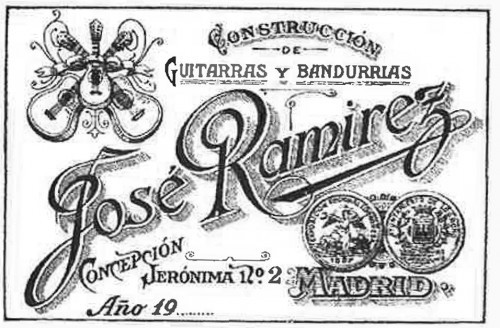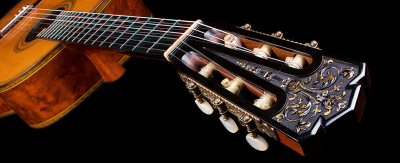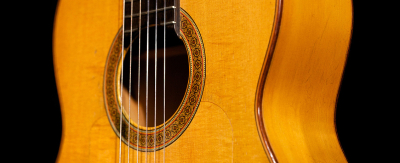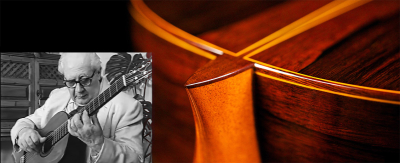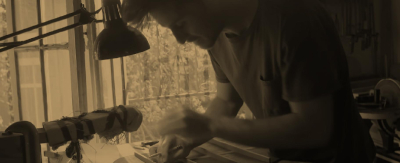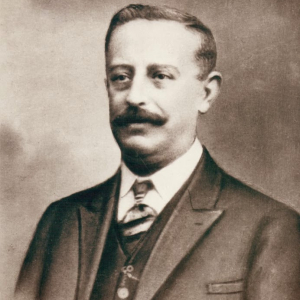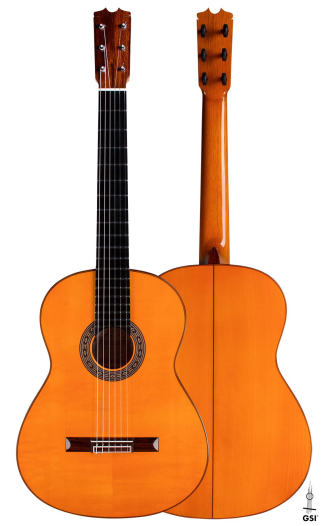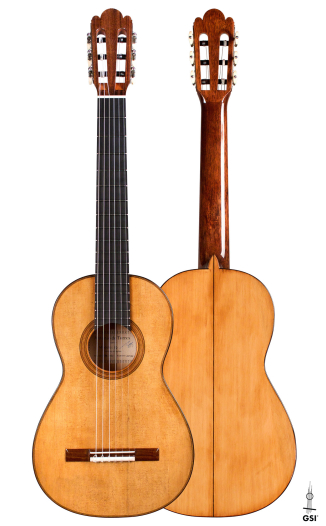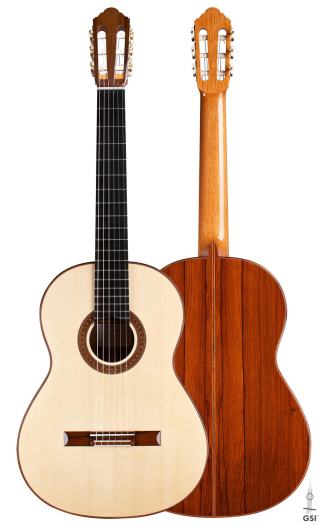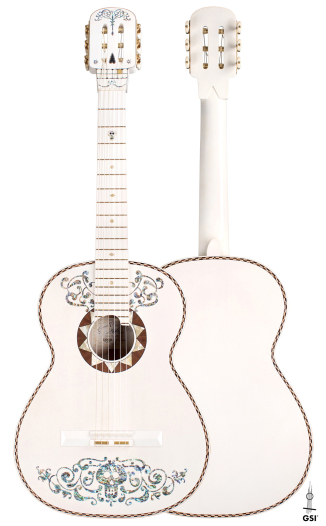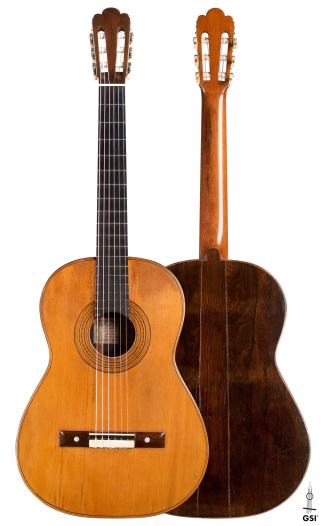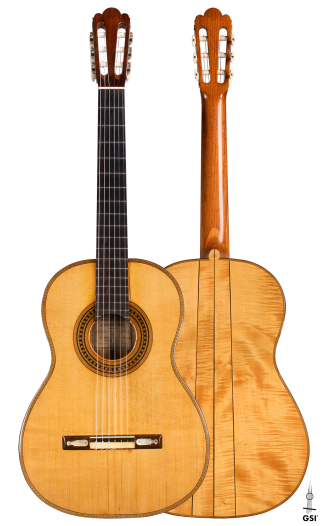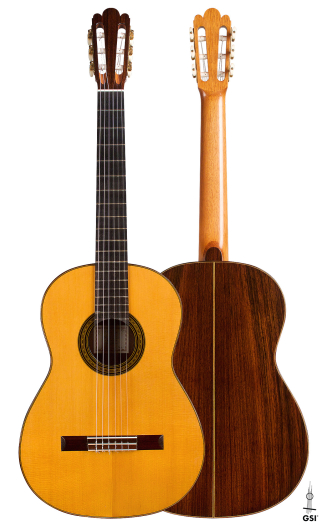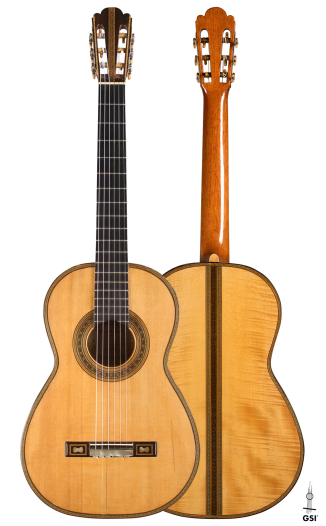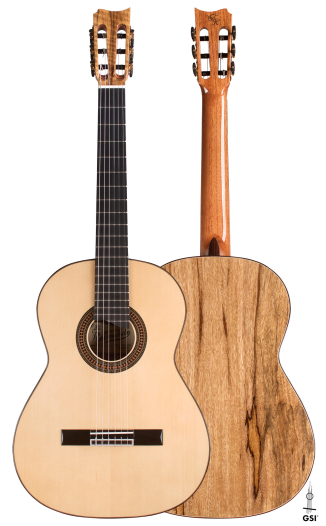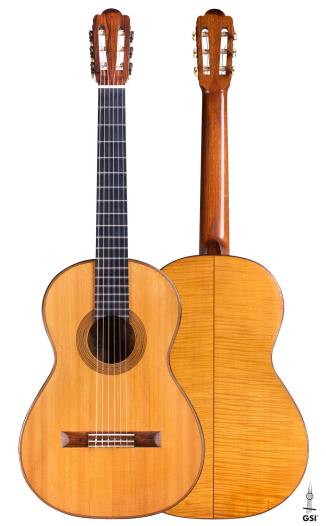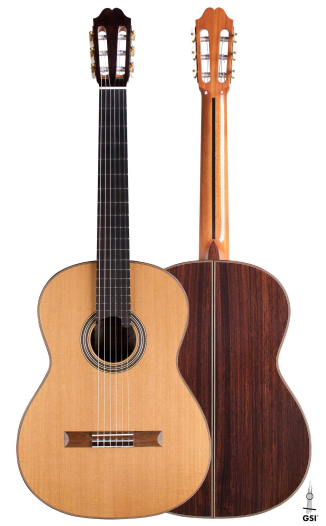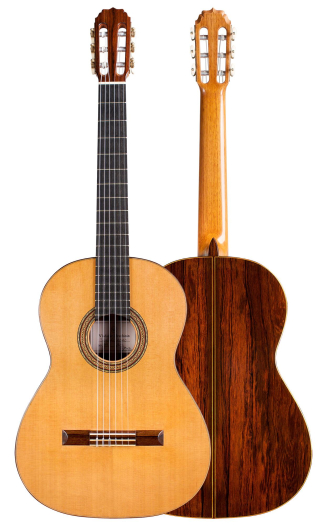The guitars of José Ramírez I (1858-1923) look backwards, but the workshop he established was to dominate Spanish guitar-making to the present day.
José Ramírez based his guitars on those of Francisco González (c.1820-c.1880), and once he had established a style, he stuck to it throughout his life. By the late-19th century, Madrid had developed a strong guitar-making tradition of its own, accepting the fan-strutting and large plantilla of Torres but adding a few local idiosyncracies. Chief among these was the arching of the soundboard developed by Juan Moreno in the 1830s. The soundboard was arched during construction and held in position by an arched harmonic bar and shaped bridge. The aim was to make the top strong but as thin as possible for efficient transfer of sound.
This was a tremendously influential technique over the next generation of Madrid guitar makers, of whom Francisco González was the most important. He considered himself an innovator, winning prizes at Zaragoza and Paris, and his labels declared that his instruments had “a new and elegant form” and were “built with his own special system”, possibly a reference to the arched top.
José Ramírez joined González as an apprentice at the age of 12. He set up in business on his own account in about 1882, taking his famous premises at Concepcion Jeronima No. 2 in 1890. There he took on a series of remarkable apprentices: his brother Manuel Ramírez, Enrique Garcia, Julian Gomez Ramírez, who was not a relation, Francisco Simplicio, and his own son, José Ramírez II. The Ramírez shop must have been doing very well to support such a staff.
José Ramírez was recognized as an outstanding master guitar-maker. Flamenco guitarists would frequently approach him to find a solution for better projection of sound, which lead to José creating the tablao guitar. Its success depended on the Ramírez version of the tablao guitar, developed from the large guitars González had made for flamenco players earning a living on the tablaos. These were the small stages of the cafes cantantes, or flamenco bars, that had come into being in the middle of the century.
Previously an intimate art, flamenco was now a matter of public performance, and the players required instruments that were loud, with a cutting tone. They also liked them new, with the raw edge that comes before guitars are fully ‘played in’. Ramírez was happy to oblige, creating an instrument with a large but shallow body in cypress and a domed soundboard. It was still being produced at the time of his death, though many flamencos had by then embraced the smaller, lighter guitars of his estranged brother Manuel.
Not that Ramírez neglected classical players. Although he never built a guitar for Andrés Segovia, he was on good terms with Tárrega, who had been so important in the career of Torres.
